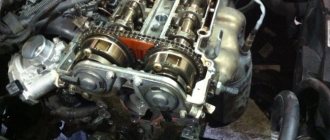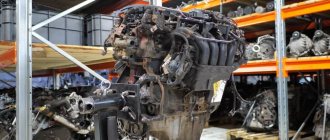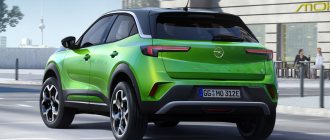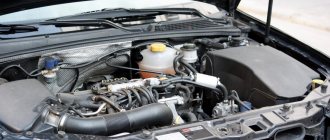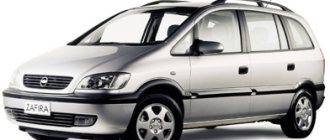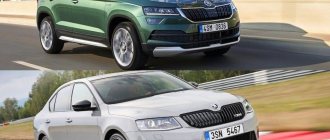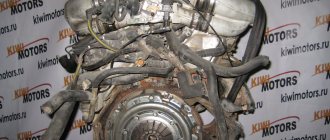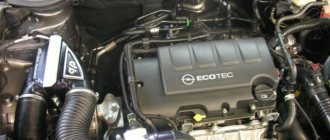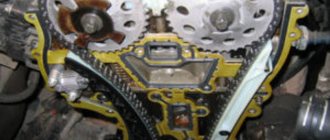Model history
The production version of the Opel Astra H was introduced in 2004. The sports version of OPC appeared only in the fall of next year. How is it different from the civilian Astra? First of all, the power unit and some stylistic changes. Wider wheel arches, massive bumpers and a centrally located exhaust tip are the distinctive features of the compact OPC. 18-inch wheels were offered as standard, but 19-inch wheels were available at extra cost. The interior was enriched with Recaro sports seats.
In October 2005, the Opel Astra OPC visited the Nürburgring, with real German racer Manuel Reiter at the helm. Result? Record in the class - 8 minutes 35.93 seconds. In honor of this event, GM released a limited edition OPC Nurburgring Edition to the market in 2008. A characteristic feature of this modification: IDS Plus 2 variable suspension, 19-inch wheels, a body painted in white lacquer, and a racing chessboard along the entire length of the car from the hood to the tailgate. A total of 835 copies of this version were produced.
A year later, another limited edition Opel Astra OPC Race Camp appeared in Opel showrooms. The black roof, wheels, mirrors, grill trim and white body paint became characteristic differences from the usual OPC. Production of the “sports” modification ended in 2010, along with the stop of the assembly line of the civilian version.
Opel Astra OPC
Story
The management of Opel, having released a charged version of the Astra GTC in 2004, seemed to satisfy the tastes of buyers who wanted to become owners of a compact sports car - after all, according to its characteristics, this bright “three-door” really claimed to be considered a car with a sporty spirit. But already in the next year, 2005, an even more powerful version of the Astra GTC was presented to the public - OPC (Opel Performance Center), which received factory technical and stylistic tuning.
Externally, the more charged version of the hatchback differed from the GTC in the shape of the front and rear bumpers, the side body kit and sharp, convex moldings, and a more pronounced rear spoiler on the roof. The radiator grille had a wide horizontal strip painted in body color (in the GTC and other versions of the third generation Astra it was chrome-plated), and a trapezoidal chrome exhaust pipe was placed in the center of the rear bumper.
Another difference of the Astra OPC were the original six-spoke aluminum alloy wheels. In addition to these features that distinguished the most charged version of the Astra from the same GTC, there was the abbreviation “OPC” placed on the tailgate. Inside, this abbreviation was placed on the Recaro seats and steering wheel.
The interior was made of high-quality plastic, and the seat upholstery was made of leather or a combination leather/fabric. The sportiness of the model was emphasized by aluminum pedals and chrome-plated instrument rims.
The model was equipped with one engine – a 2.0-liter petrol engine with turbocharging. This was a boosted version of the same engine that was installed on the Astra GTC. Its maximum power reached 240 horsepower, accelerating the car from zero to hundreds in 6.4 seconds, and the top speed was 244 km/h. The engine was mated only to a 6-speed manual transmission. Already in the basic configuration, Astra OPC was equipped with an adaptive IDSPlus chassis and reinforced brakes.
This version of the Opel Astra was produced until 2009 (in Australia and New Zealand - until 2011), and in 2012 it was replaced by a new generation.
Exterior
Presented at the Geneva Motor Show, the Opel Astra OPC has cosmetic differences from its less powerful version, the Astra J GTC. First of all, this concerns the front bumper with a wide U-shaped air intake, which has been modified to include triangular recesses with silver trim for the fog lights. On the sides of the body, in addition to the “blade-shaped” line common to all versions of the fourth generation Astra, an original line appeared, running from the door handles to the trunk.
The OPC version is also distinguished by chrome arches running along the roof line from the A-pillar to the C-pillar, and a body kit on the sides. There were also changes at the stern: there was a bumper of a different shape than the Astra J GTC, two trapezoidal mufflers, and a powerful spoiler on the trunk.
You can find out that this is the “hottest” version of Astra by the chrome abbreviation “OPC”, which is placed on the right side of the tailgate. This model is equipped with 20-inch alloy wheels with low-profile tires, which further emphasizes the sporty character of the car.
Interior
A distinctive feature of the interior of this version are Recaro sports seats with original headrests, backrests with pronounced lateral support and elongated pillows with a retractable outer part. The Astra OPC has a different steering wheel than the GTC with a slightly truncated lower edge and an abbreviation stamped on it, pedals with aluminum pads and branded sills made of the same material. The “OPC” abbreviation can also be found on the seat headrests and gear shift lever.
Being the most expensive version of the Astra family, the interior of this hatchback is already trimmed with expensive and soft plastic as standard, and the seats have leather upholstery. The design of the seats and the front part of the cabin eloquently indicates that this car is for a maximum of two passengers, so only preschool children will be comfortable in the back row of the Astra OPC.
Specifications
Astra J OPC, like the previous version, is equipped with only one engine – a 2.0 liter turbocharged petrol engine. The power of this engine was increased from 240 to 280 horsepower, and the maximum speed increased from 244 to 250 km/h, making the OPC the fastest in the Astra family. The engine is equipped with a 6-speed modernized “mechanics”.
Also, as standard, the car is equipped with a new FlexRide adaptive chassis, and a sliding differential is used in the front suspension for the first time, which further adds stability when taking sharp turns.
More details
Engine
Petrol: 2.0 R4 Ecotec Turbo (240 hp).
Fans of fast hatchbacks, as a rule, decide to buy a Honda Civic Type-R, Renault Megane RS or Volkswagen Golf GTI. The Opel Astra OPC is not as popular as its competitors, although in fact it does not deserve it. This is indirectly confirmed by the dynamic characteristics - 6.9 seconds to 100 km/h (6.4 - declared by the manufacturer). All competitors noted above are inferior to Opel in the sprint. The maximum speed of the sport version is 244 km/h.
In city traffic, the hatch is content with 13-14 l/100 km, but get a little carried away and the consumption immediately becomes higher. On the highway, the OPC consumes an average of 10-11 l/100 km. Considering the maximum power, this is a good result.
The 2-liter turbocharged Ecotec is a fairly reliable design that, as a rule, does not cause serious problems during operation. But it was not entirely without its shortcomings.
Before purchasing, you should carefully inspect the engine for oil leaks, which are observed quite often. In driven examples, there are cases of damage to the gasket under the cylinder head and malfunction of the turbocharger. The exhaust manifold, in which holes often form, should also be thoroughly inspected. Rarely, but there are even cases of “rupture” of the block head.
Technical characteristics of Astra OPC
Behind the sporty exterior of the car lies a quite good turbocharged petrol engine with a volume of 2 liters and a power of 280 horsepower. The engine is equipped with a six-speed manual transmission. Unfortunately for many fans of the Opel brand, automatic transmission is not provided in this model.
The power of the Opel Astra OPC power unit is enough to accelerate the car quite quickly: it takes only 6 seconds to reach a speed of 100 km/h. The car accelerates to almost a maximum speed of 200 km/h in a full 20 seconds, which is a very good result.
The maximum speed declared by the manufacturer is 250 km/h, but many car enthusiasts note that it can be increased by tuning the Opel Astra OPC to 270 km/h. Experts note that the model is equipped with an electronic speed limiter, which is quite easily removed during the engine tuning procedure.
The front axle has standard MacPherson struts, but the Astra OPC uses the original HiPerStrut design with steering knuckles to which the hubs are attached, thanks to which the struts remain in one place when the steering wheel is turned, which allows reducing the lateral tilt angle of the axle by 44%, and the running shoulder is by 46%. Accordingly, it is possible to increase the area of the tire contact patch when turning and improve handling.
The rear suspension is represented by a beam with a Watt mechanism, equipped with stiffer springs and a ground clearance reduced by 10 mm. This is all equipped with FlexRide shock absorbers and power steering, operating in three modes - Normal, OPC and Sport - and a Brembo brake mechanism.
Technical features
The car was offered only as a 3-door hatchback. As befits a typical hot hatch, power from the engine is sent to the front wheels through a 6-speed manual gearbox. To improve driving performance, the manufacturer installed the EDC system - an advanced traction control system that has nothing in common with the usual mechanical limited-slip differential.
The front axle has MacPherson struts and the rear axle has a torsion beam. Unfortunately, the latter solution doesn't perform very well in tight and tight corners, but most competitors can't do that either.
As for safety, the civilian version earned 5 stars in EuroNCAP crash tests.
origin of name
Name Astra
originated from Vauxhall, which produced and sold the Opel Kadett D (1979-1984) and Opel Kadett E (1984-1991) as the Vauxhall Astra. Subsequently, in the late 1980s and early 1990s, GM Europe standardized model nomenclature (the names of all passenger cars began to end with the letter “a”), which led to models bearing the same names, regardless of who sold an Opel or Vauxhall car.
By 2011, 4 generations of Opel Astra had already been released. As is customary for all Opel car models, each generation is designated by a letter of the Latin alphabet. Opel's official position is that Astra is a logical continuation of the Opel Kadett line, therefore the first generation of Opel Astra is designated as Opel Astra F
(the last generation of Opel Kadett was the Opel Kadett
E
).
Typical problems and malfunctions
Front-wheel drive in a powerful car does not work efficiently enough. This combination not only affects dynamic performance, but also tires and drive shafts wear out faster. Astra OPC owners are no strangers to these types of problems.
Another common problem is the short life of the clutch. During the test drive, you should check whether it is slipping? In addition, premature wear of the gearbox bearings occurs. The steering also has its weaknesses, so monitoring its serviceability is mandatory.
As in the civilian Astra, the air conditioning compressor may fail. Owners note periodic problems with the voltage regulator. In addition, the CIM module often fails, as well as the tire pressure monitoring system and xenon. The exhaust system, which quickly becomes covered with rust, is also not durable.
